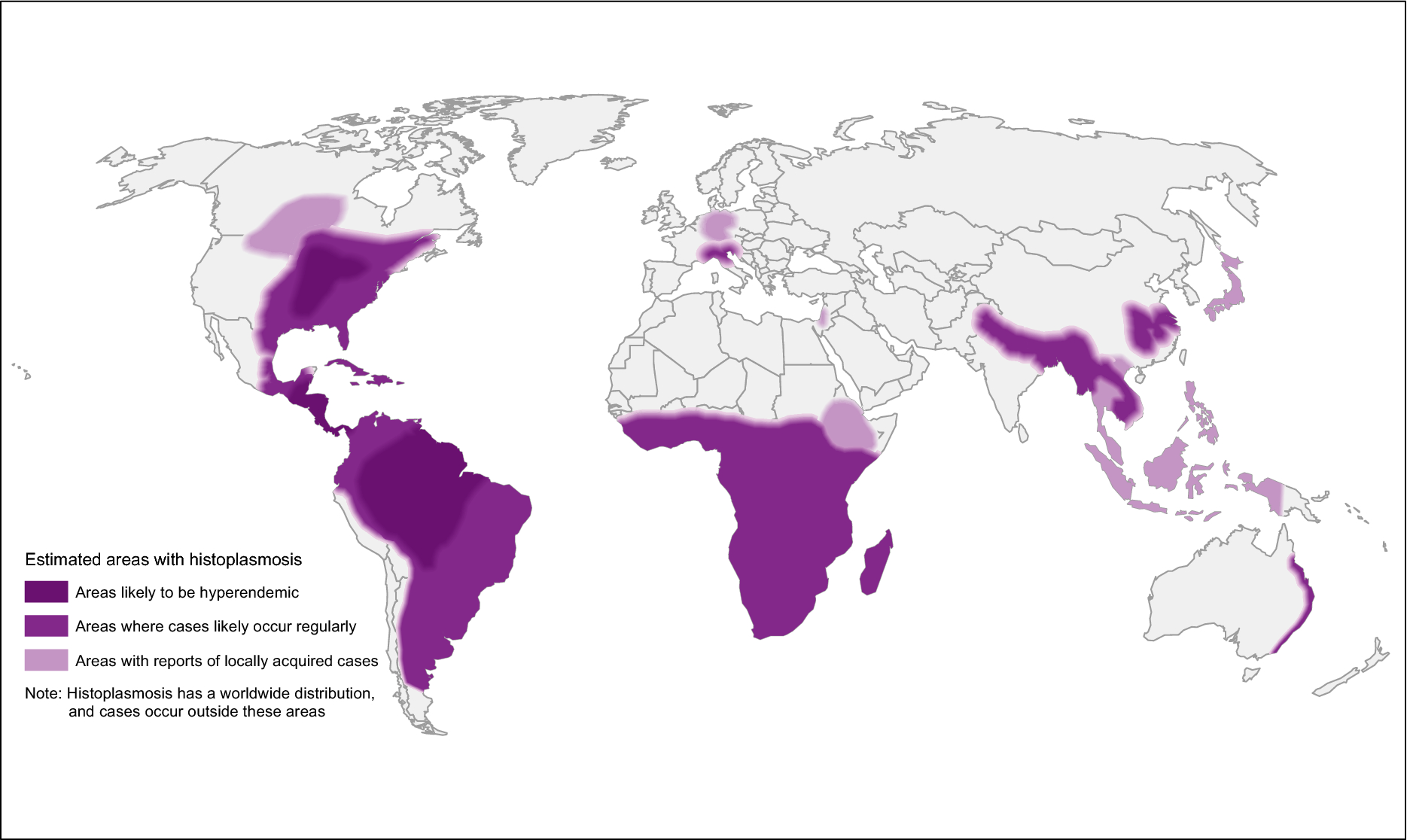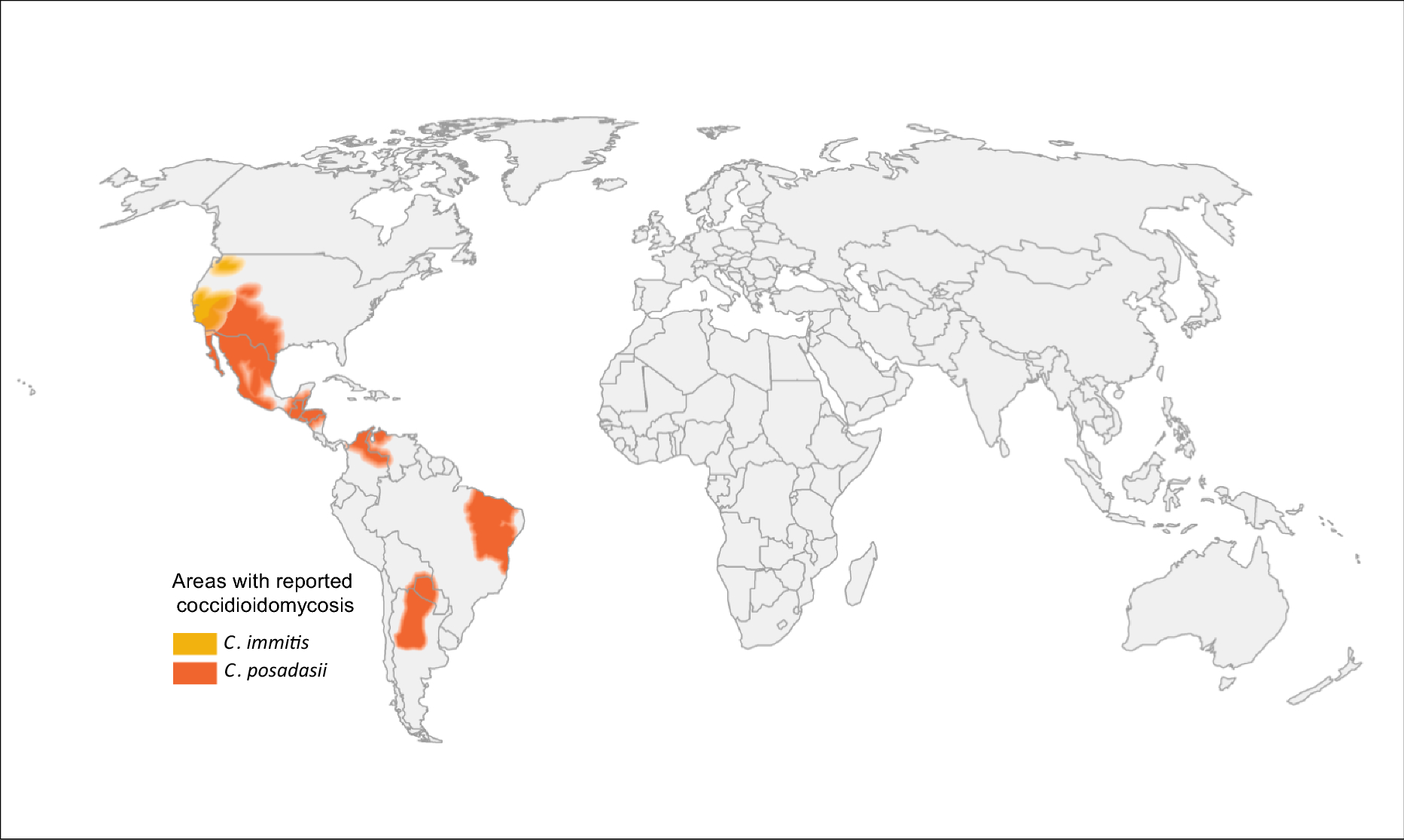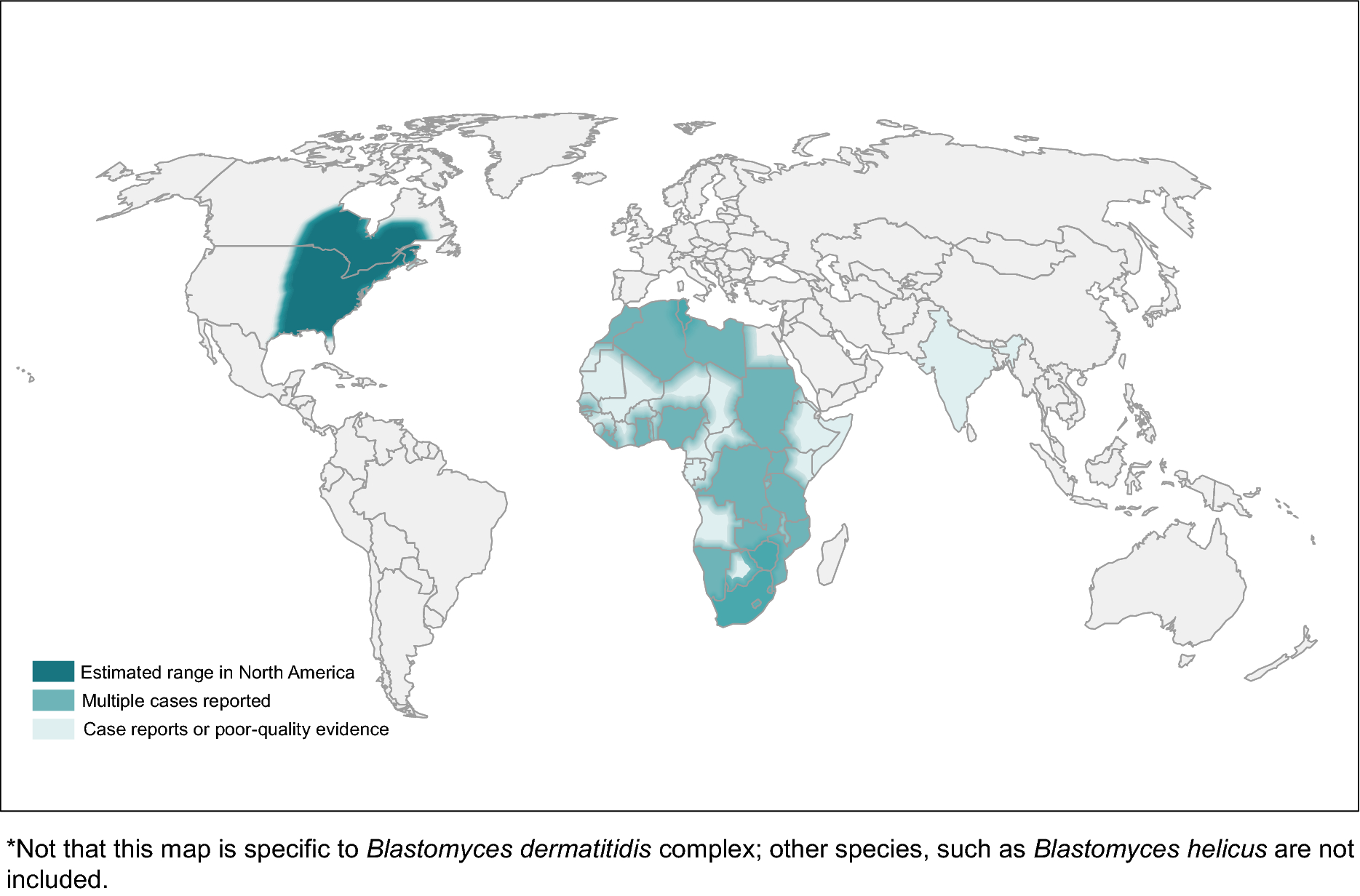Dimorphic fungi: Difference between revisions
From IDWiki
(→�) |
(added table) |
||
| Line 1: | Line 1: | ||
* Fungi that exist in a mold form at lower temperatures in the environment, and a yeast form at higher temperatures in the host body |
|||
== Species == |
|||
* [[Cryptococcus]] does exhibit dimorphism, though it is predominately yeast and its dimorphism is not likely related to disease |
|||
| ⚫ | |||
| ⚫ | |||
* ''[[Coccidioides immitis]]'' and ''[[Coccidioides posadasii]]'' |
|||
* ''[[Cryptococcus neoformans]]'' and ''[[Cryptococcus gattii]]'' |
|||
| ⚫ | |||
{| class="wikitable" |
|||
| ⚫ | |||
!Organism |
|||
| ⚫ | |||
!Distribution |
|||
!Diseases |
|||
!Treatment |
|||
|- |
|||
| ⚫ | |||
|eastern US and Canada, with some reported in Africa |
|||
|pulmonary infection, verrucous skin lesions, osteomyelitis, CNS infection |
|||
|[[itraconazole]] (with [[amphotericin B]] induction if severe) |
|||
|- |
|||
|[[Coccidioides species]] |
|||
|southwestern US and parts of South and Central America |
|||
|pulmonary infection, verrucous skin lesions, osteomyelitis, CNS infection |
|||
|[[fluconazole]] (with [[amphotericin B]] and [[flucytosine]] induction if severe) |
|||
|- |
|||
| ⚫ | |||
|worldwide, including eastern North America, Central and South America, sub-Saharan Africa, and parts of Southeast Asia |
|||
|pulmonary infection, CNS infection |
|||
|[[itraconazole]] (with [[amphotericin B]] induction if severe) |
|||
|- |
|||
|[[Paracoccidioides brasiliensis]] |
|||
|South America |
|||
| |
|||
| |
|||
|- |
|||
| ⚫ | |||
|essentially worldwide |
|||
|[[nodular lymphangitis]] |
|||
|[[itraconazole]] |
|||
|- |
|||
|[[Talaromyces marneffei]] |
|||
|Southeast Asia |
|||
| |
|||
| |
|||
|} |
|||
<br /> |
|||
| ⚫ | |||
| ⚫ | |||
[[File:Histoplasmosis_map.png|frame|Histoplasmosis]] |
[[File:Histoplasmosis_map.png|frame|Histoplasmosis]] |
||
Revision as of 18:41, 20 August 2020
- Fungi that exist in a mold form at lower temperatures in the environment, and a yeast form at higher temperatures in the host body
- Cryptococcus does exhibit dimorphism, though it is predominately yeast and its dimorphism is not likely related to disease
| Organism | Distribution | Diseases | Treatment |
|---|---|---|---|
| Blastomyces species | eastern US and Canada, with some reported in Africa | pulmonary infection, verrucous skin lesions, osteomyelitis, CNS infection | itraconazole (with amphotericin B induction if severe) |
| Coccidioides species | southwestern US and parts of South and Central America | pulmonary infection, verrucous skin lesions, osteomyelitis, CNS infection | fluconazole (with amphotericin B and flucytosine induction if severe) |
| Histoplasma capsulatum | worldwide, including eastern North America, Central and South America, sub-Saharan Africa, and parts of Southeast Asia | pulmonary infection, CNS infection | itraconazole (with amphotericin B induction if severe) |
| Paracoccidioides brasiliensis | South America | ||
| Sporothrix schenckii | essentially worldwide | nodular lymphangitis | itraconazole |
| Talaromyces marneffei | Southeast Asia |
Distribution
- Endemic dimorphic fungi are widely distributed1
References
- ^ Ashraf N, Kubat RC, Poplin V, Adenis AA, Denning DW, Wright L, McCotter O, Schwartz IS, Jackson BR, Chiller T, Bahr NC. Re-drawing the Maps for Endemic Mycoses.. Mycopathologia. 2020. doi:10.1007/s11046-020-00431-2. PMID 32040709.


